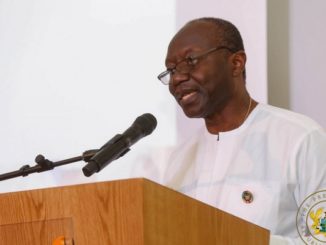 The World Bank is predicting a drop in Ghana’s Gross Domestic Product (GDP) growth by end of 2018.
The World Bank is predicting a drop in Ghana’s Gross Domestic Product (GDP) growth by end of 2018.
This was contained in the 2018 Africa Pulse report by the World Bank. The bi-annual analysis on the state of the African economies including Ghana indicates that growth in the non-resource-industrial sectors in oil and metal exporters has yet to pick up underscoring the slow structural transformation in the country.
Ghana’s GDP for 2017 hit 8.5 percent, the highest growth in five years with the oil and gas sector is one of the largest contributors.
The report further explains how the availability of good jobs has not kept pace with the number of entrants in the labour force; rising public debt burdens, fueling debt sustainability risks among others continue to affect the GDP growth of the Ghanaian economy. Meanwhile, the World Bank is urging the government to deal with the rising debt levels which currently stands at 69.8 percent of GDP.
In its recent Africa Pulse report, the World Bank warns that a continuous rise in the country’s debt to GDP will not only leave Ghana a debt distressed economy but also have the debt levels unsustainable.
The Bank is calling for more prudent public spending and increase in revenue. In fact, the report shows that issues of rising public debts are a challenge for economies in the region.
It explains that public debt levels in the region have been rising from 2013 following a period of declining and stable debt levels resulting from debt relief under the Heavily Indebted Poor Country and Multilateral Debt Relief Initiatives.
Debt sustainability risks in the region have increased significantly over the past few years with 18 countries at high risk of debt distress by March 2018, compared with eight in 2013.
The composition of public debt has changed away from traditional toward new sources of financing.
The share of concessional and multilateral lending is on clear downward trend and by 2016 the bulk of bilateral lending was provided by non-Paris Club creditors.
Source: myjoyonline.com


